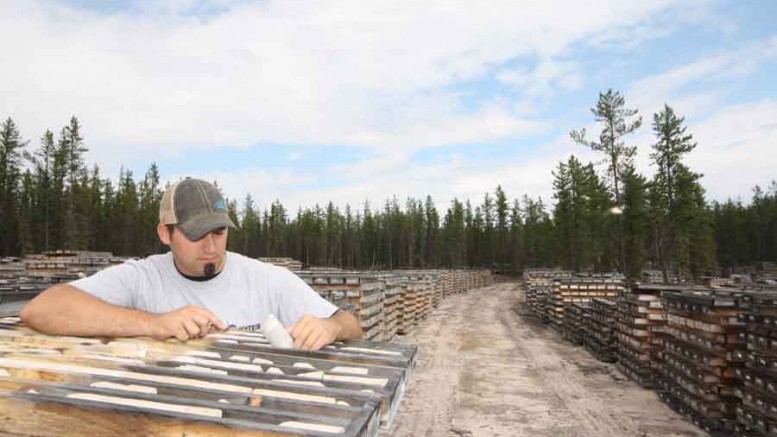While challenging market conditions are forcing many companies to axe their exploration budgets, Denison Mines (TSX: DML; NYSE-MKT: DNN) is pumping $15 million into a 60,000-metre drill program in the Athabasca basin in 2014, marking one of its largest exploration programs in several years, the company says.
The drill program is spread over 13 uranium properties, but nearly half of it will focus on its 60%-owned Wheeler River project, 35 km southwest of Cameco’s (TSX: CCO; NYSE: CCJ) producing McArthur River mine.
The Toronto-based company plans to drill 27,000 metres and carry out geophysical surveys on Wheeler River, a project that holds 19 contiguous claims totalling 123.3 sq. km. The Wheeler River program would cost US$8 million, of which Denison’s share is US$4.8 million.
Targets at Wheeler River include high-grade mineralization extensions at the Phoenix deposit and follow-up drilling on the 489 zone, Phoenix North and the K-zone. The K-zone is a 12 km long corridor of faulted metasediments, with elevated trace-element geochemistry and hydrothermal alteration along the western side of the property.
Denison will spread the remaining drill power across a number of other properties, including 5,000 metres at Bell Lake; 4,000 metres at Moore Lake; 3,550 metres at Crawford Lake; 3,050 metres at Bachman Lake; 2,700 metres at Waterbury Lake; 2,400 metres at Park Creek; 2,100 metres at Hatchet Lake; 4,000 metres at Wolly; and 2,700 metres at McClean Lake.
Outside of Canada, Denison plans to spend US$1.8 million on geological mapping and geochemical and trenching programs at its 100%-owned conventional heap-leach Mutanga project in Zambia, and US$1 million on restructuring its Gurvan Saihan joint venture in Mongolia to meet the requirements of the country’s nuclear energy law.
The company closed its acquisition of the remaining shares it did not already own in Rockgate Capital through an all-share deal valued at $26.7 million.
Colin Healey of Haywood Securities notes that acquiring Rockgate and its Falea project, a uranium–copper–silver deposit in Mali, “is part of building a diversified and marketable African exploration-development package which could be spun out into a stand-alone vehicle in the future.” The package, he says, would “likely include” Denison’s Mutanga project in Zambia, its exploration joint-venture assets with Rio Tinto in Namibia and the Falea project in Mali, which he calculates add up to more than 94 million lb. uranium oxide in National Instrument 43-101-compliant resources across all categories.
Healey comments that while the acquisition is neutral to his valuation of Denison, he believes it’s “positive from a strategic point of view, in terms of assembling a suite of African uranium assets with potential to increase in value with a rising uranium price, and provides significant liquidity to the DML balance sheet, providing additional operating flexibility.”
In Healey’s view, such a spin-out could bring value to shareholders and create “two separate, geographically focused uranium exploration- and development-investment vehicles, leaving Denison with a highly attractive portfolio of advanced exploration, development and hard assets in the Athabasca basin.”
Including the high-grade Phoenix deposits in Canada on the Wheeler River project, Denison’s exploration portfolio includes 46 projects and totals 5,970 sq. km in the eastern part of the basin. The company’s interests include a 22.5% stake in the McClean Lake joint venture, which includes several uranium deposits and the McClean Lake uranium mill, one of the world’s largest uranium-processing facilities, plus a 25.17% stake in the Midwest deposit and a 60% stake in the J-zone on the Waterbury property. Both the Midwest and J-zone deposits are within 20 km of the McClean Lake mill.


Be the first to comment on "Denison to drill 60,000 metres in 2014"